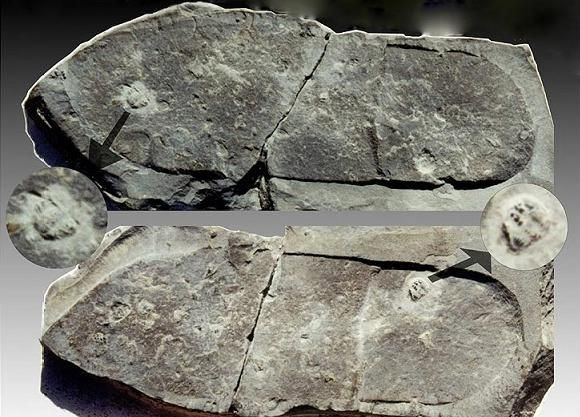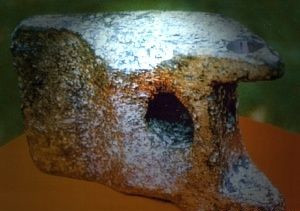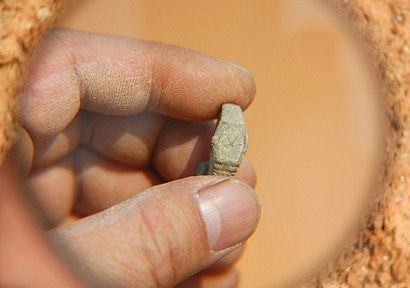
The most sensational find of this kind was made in 1927 in the state of Nevada, when a petrified trace from ... a shoe was found in sediments that are 160-195 million years old. The footprint from the sole was clearly visible, and on it even double seam was visible! The most interesting thing is that this is not the only imprint of the oldest shoes in the world.
Dr. Wilbar Barrows, head of the geological department of Bari College in Kentucky, once reported on the fact that he discovered human traces in coal sandstone. These were traces of shoes.
Even with the latest equipment, it was not possible to detect the facts of engraving, carving or skillfully stamping in or around the marks.
Даже с помощью новейшей аппаратуры обнаружить фактов гравировки, вырезания или искусной штамповки внутри или вокруг следов не удалось. Возраст горы, где находились отпечатки, геологи оценивают в 240 миллионов лет.
The age of the mountain where the prints were located, geologists estimate at 240 million years. In the summer of 1968, in an area called the Source of Antelopes, an amateur archaeologist W.J. Meister, while searching for petrified trilobites, found another imprint of a human foot inside the rock, under which the trilobite froze.
Scientists have determined that this was the footprint of a modern person, shod in sandals. But trilobites, the ancient mollusks that became the first inhabitants of the ocean, lived on Earth 600 million years ago, 300 million years before dinosaurs appeared. How did our contemporary get there, crushing trilobite with sandals? Interestingly, the heel of the shoe wore traces of wear characteristic of the right foot.
 In the summer of 1974, a new find stirred up the scientific world. To the east of the Romanian city of Ayud, in a layer of soil washed up by the waters of the Mures river, at a depth of ten meters, archaeologists have discovered a metal object, somewhat resembling an ax. According to the results of the most superficial analysis, scientists have found that it was made of aluminum several million years ago!
In the summer of 1974, a new find stirred up the scientific world. To the east of the Romanian city of Ayud, in a layer of soil washed up by the waters of the Mures river, at a depth of ten meters, archaeologists have discovered a metal object, somewhat resembling an ax. According to the results of the most superficial analysis, scientists have found that it was made of aluminum several million years ago!
The length of the “hatchet” was a little over 20 centimeters. On opposite sides, round holes were made in it, connecting to each other in the middle. In addition, there was a notch with two teeth on the blade, reminiscent of the detail of the bucket of a modern excavator in a reduced form.
The material from which the mysterious object was made was examined in the laboratory of the Research Institute of Ores and Metals in Magurel. Chemical analysis showed that a metal alloy consists of twelve different elements, the bulk of which is aluminum. But this metal was discovered only in 1825, and its industrial production began even later - at the end of the XIX century!
 No less surprising item was found in December 2008 in the Chinese district of Guangxi. During the excavation of one of the ancient tombs, archaeologists discovered a wristwatch engraved with “Swiss” on the back case, the hands of which stopped at 10:06 in the morning.
No less surprising item was found in December 2008 in the Chinese district of Guangxi. During the excavation of one of the ancient tombs, archaeologists discovered a wristwatch engraved with “Swiss” on the back case, the hands of which stopped at 10:06 in the morning.
According to the researchers, the product of the Swiss watchmakers of the 20th century in some incomprehensible way got to where the human foot has not set foot for about four centuries!
“When we tried to remove the earth around the coffin, we heard a metallic sound made by a piece of rock falling off and falling to the floor,” said one of the participants in the excavation. “We picked up the item, removed the dried earth and, to our great surprise, found it to be a watch!”
Read More

